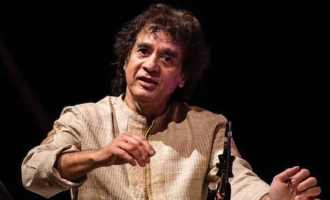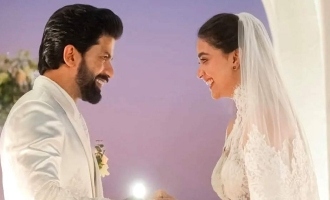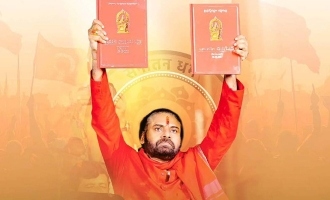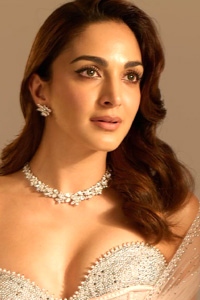Rathnavelu's insightful interview on the art of cinematography & more


Send us your feedback to audioarticles@vaarta.com



Rathnavelu is a technican par excellence. Right now, he is one of the best cinematographers in the country. 'Rangasthalam' is the super talent's latest hit. In this knowledgeable interview, Randy (as he is fondly called by industry people) shares a lot of exciting stuff about his approach to cinematography with special reference to 'Rangasthalam'.
Who is a cinematographer in your opinion?
A cinematographer is not just an operator of the camera. He is a visual narrator. He should understand the script. He is not just into delivering beautiful images.
Coming to me, I believe in using the camera psychologically. For example, in Rangasthalam's climax scenes, the idea was to take the audience to the centre of the grass in the village.
What is your approach to a film in general?
I listen to the script 2-3 times. I accept a film only after listening to the script. Even with Sukumar, with whom I have partnered for the last 14 years (since 'Arya'), I don't accept without knowing the story. And as I discuss with my director and other technical departments every day, fresh ideas keep cropping up.
I don't restrict my actors in the sense that I give them the physical space they need. They can move freely and I ensure their performance is captured. For example, in 'Rangasthalam', the scene where Samantha kisses Ram Charan, the actors didn't know where the camera was.
How challenging was it to do 'Rangasthalam'?
First and foremost, the audience had to be transported to the '80s. It can't happen just like that. The rustic tone, the feel - they have to be achieved. The visuals have to be realistic. They have to be like a painting. And for this, I had to stay true to the script throughout.
Could you please be specific about the "feel" that you had to create?
The smell of the mud, the women folk's 'pasupu', etc. And beyond those, as a cinematographer, I had to capture the performance in the tough sequences. For example, 30 scenes had long single shots. And in some cases, the space available was small. Everything had to be preceded by a thorough pre-visualization.
When you are doing a 'Rangasthalam', you have to be fully prepared beforehand. A lot of preparation goes into the skin tone you want as output, make-up, shadow, etc. I told Samantha about how her makeup should be so that she reflects the village girl. She was initially skeptical.
What about the colour palette?
We had to shoot in real locations. Blue sky, mountains, green paddy fields - we have seen them in 100s of movies. So, in 'Rangasthalam', the idea was to exude a burn-out feel, the summer's dryness, and the like. I wanted to exploit this. And since we shot in extreme conditions (harsh sunlight), we had to deploy a camera with a good dynamic range to capture the shadow and the high light.
How did you coordinate with other departments for this film?
In order to achieve the needed output, I had to tell the costume designers what colours they should avoid, etc. For example, you can't afford to have pink, bright yellow, etc in this period film. If the tone is largely brownish, appropriate costumes have to be used. Similarly, with the art director, I had to get him follow a discipline. Since Ramakrishna is a senior technician, he followed the Do's and Dont's I had given him.
This was the toughest film to do. I shoot very fast. Because I take decisions quite fast. But 'Rangasthalam' was very difficult. For one, there are so many characters. For another, we went for classical filmmaking style of lengthy shots. The pressure was so much there on me. For example, managing the lighting indoors was a challenge. Another example is that of showing Jagapathi Babu's house. The rest of the village is supposed to seem to be at a lower elevation vis-a-vis the president's house. Since he is a villain, his scenes needed special kind of lighting. I used hard light for his scenes.
How was it working with Ram Charan?
On the second day itself, I told him that he is a very natural actor. He is a spontaneous actor who gives his best in the first or second take. What Chiru sir achieved in 40 years, his son has done it in 11 years. He is really amazed by his son's performance.
Why have you not done so many movies in your long career?
I am a passionate film lover. I always want to give my everything to one film at a time. '1: Nenokkadine' was supposed to be over in 7-8 months. But I ended up doing it for 24 months.
After 'Robot' became a big hit, I had to forgo 13-14 offers because I do only one movie at a time. It doesn't matter to me even if I lose money because of that. I always want to push to next level. I am not content with just giving what my director asks for.
You have done a sci-fi like 'Robot' and a period film like 'Rangasthalam'. Which one was tougher to do?
In the case of 'Robot', I went about implementing the lessons I had learned as a cinematographer. It was more about technical excellence. In the case of 'Rangasthalam', it was about putting my heart and soul. I had done 'Sethu', which was a critically-acclaimed blockbuster. After many years, here was another film for which I gave my heart and soul. I was kicked up about doing a village film. Doing a film like this with a commercial hero like Ram Charan is all the tougher.
Who is the most creative director you have worked with? Who are your fovourite cinematographers?
Working with different directors is as different as playing cricket in Australia, London, and India. You have to adapt to the situation.
My most favourite is Janusz Kaminski, the cinematographer of 'Saving Private Ryan'. He has been in a partnership with Steven Spielberg. In India, I like Santosh Sivan, Ravi K Chandran, and Rajeev Menon, whose work inspired me to become a cinematographer.
How do you update your knowledge? How do you manage expectations?
After my day's work, I browse and study the latest technological developments. If I don't read for at least 30 minutes a day, I go mad. Every five months, there is an advancement in cinematography. But the cameraman has to take it to next level.
After I do a pathbreaking movie, people start expecting more from me. I manage it in my own way. For example, after 'Robot', I did a low-budget movie.
Tell us about 'Sye Raa'.
When I was approached for the film, I asked them for three months' time so that I can prepare for this biopic. It's not possible otherwise to do full justice to a film of this magnitude. 'Rangasthalam' was to get over, but it got getting delayed. That's when 'Sye Raa' too was postponed. But Megastar is damn happy with the output so far.
'Sye Raa' is a sure-shot script. My judgment is this. It's a lifetime film for Chiranjeevi garu. It will be a landmark film for others working on it. I am approaching the movie with a lot of detailing. The sets, the lighting, the costumes, the mood - we have to transport the audience to the 19th century.
Follow us on Google News and stay updated with the latest!
-

Contact at support@indiaglitz.com




 Follow
Follow
























































Comments